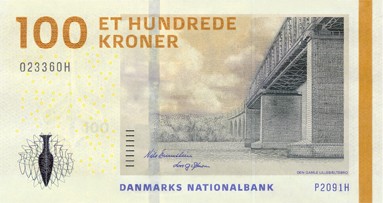The Danish Krone (DKK) has a rich history that dates back to the Middle Ages. Here’s an exploration of the history and evolution of the Danish Krone:
1. Medieval Period:
- The history of the Danish Krone can be traced back to the medieval period. In the 12th century, Denmark introduced its first official currency known as the “penning.” These early coins were often made of silver and served as a medium of exchange in trade.

2. Introduction of the Rigsdaler:
- In the early 17th century, Denmark introduced the Rigsdaler as its official currency. The Rigsdaler was subdivided into a variety of units, including the mark and the skilling. This currency system remained in place for several centuries.
3. Gold Standard:
- In 1873, Denmark adopted the gold standard, pegging the Krone to gold. This move was part of a broader international trend during that period. The gold standard was intended to provide stability to currencies and facilitate international trade.
4. World War I and Monetary Crisis:
- World War I had a significant impact on the Danish economy. During the war, Denmark abandoned the gold standard due to economic pressures. The country experienced a monetary crisis, and the exchange rate of the Krone fluctuated.
5. Establishment of the Danish National Bank:
- In 1936, the Danish National Bank (Danmarks Nationalbank) was established as the central bank of Denmark. The bank played a crucial role in managing the country’s monetary policy and issuing currency.
6. Post-World War II Period:
- After World War II, Denmark chose not to participate in the Bretton Woods Agreement, which established the U.S. dollar as the world’s primary reserve currency. Instead, the Danish Krone continued to be managed independently, and it was pegged to a basket of currencies.
7. Adoption of a Fixed Exchange Rate System:
- In 1982, Denmark shifted to a fixed exchange rate system, pegging the Krone to the European Currency Unit (ECU), the precursor to the euro. This peg provided stability and facilitated trade with other European countries.
8. European Monetary Cooperation:
- Denmark continued its cooperation with the European Economic Community (EEC) in terms of monetary policy. However, Denmark opted not to join the Eurozone when the euro was introduced in 1999.
9. Flexible Exchange Rate Regime:
- In 1999, Denmark adopted a more flexible exchange rate regime. While the Krone is still tied to the euro, the exchange rate can fluctuate within a narrow band. This approach allows Denmark to maintain some degree of independence in monetary policy.
10. Modern Period:
As of my last knowledge update in January 2022, the Danish Krone remains the official currency of Denmark. The country has not adopted the euro, and the Krone continues to be managed within a managed float against the euro.
It’s important to note that developments may have occurred after my last knowledge update, and you may want to check more recent sources for the latest information on the Danish Krone and Denmark’s monetary policies.










